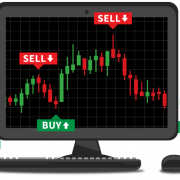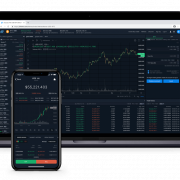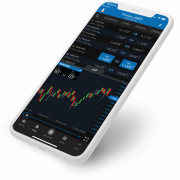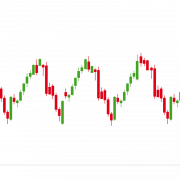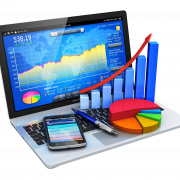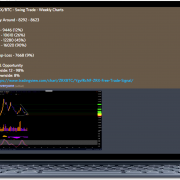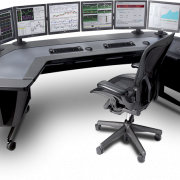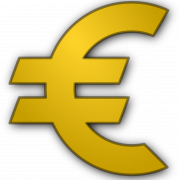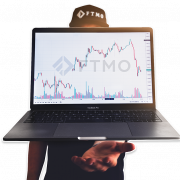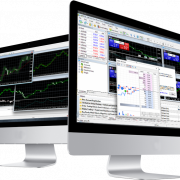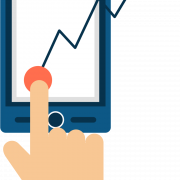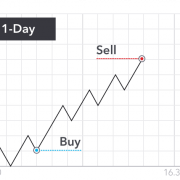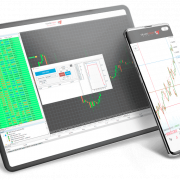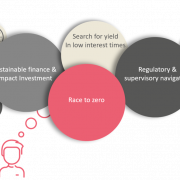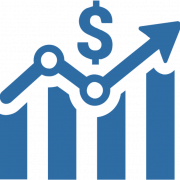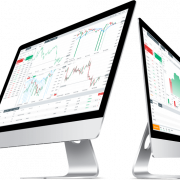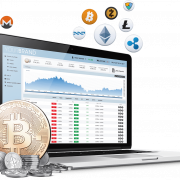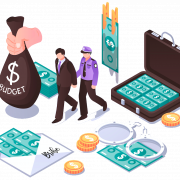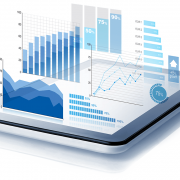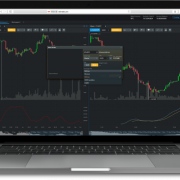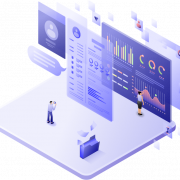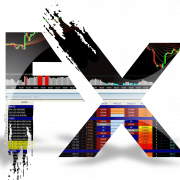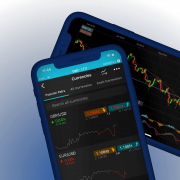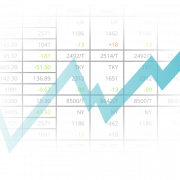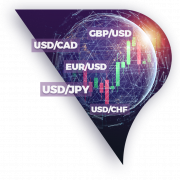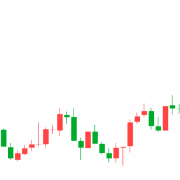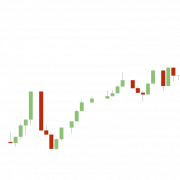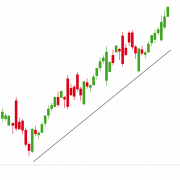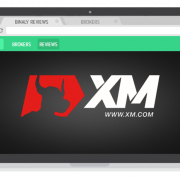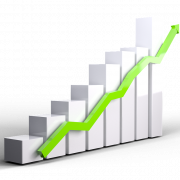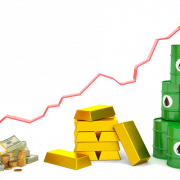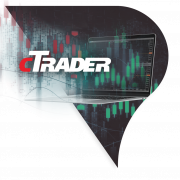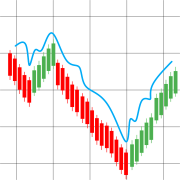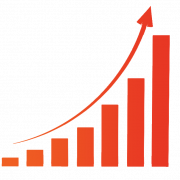Download top and best high-quality free Trading PNG Transparent Images backgrounds available in various sizes. To view the full PNG size resolution click on any of the below image thumbnail.
License Info: Creative Commons 4.0 BY-NC
The transfer of goods or services from one person or entity to another, usually in exchange for money, is known as trade. A market is a system or network that allows for trade, according to economists.
The Gift economy was an early type of trade in which commodities and services were exchanged without an express commitment for immediate or future benefits. A gift economy is one in which goods are exchanged without the use of money. Modern merchants usually conduct business using a medium of exchange, such as money. As a result, buying and selling, or earning, can be separated. Money (and subsequently credit, paper money, and non-physical money) substantially facilitated and facilitated trade. Bilateral trade is trading between two traders, whereas multilateral trade is trade between more than two dealers.
In one modern interpretation, trade arises due to specialization and labor division, a typical kind of economic activity in which people and groups focus on a single element of production yet exchange their output for other goods and services. Different locations may have a comparative advantage (perceived or actual) in producing a tradeable item, such as natural resources that are rare or limited elsewhere. For instance, the size of different regions may encourage mass production. In such cases, trading at market prices between locations can be beneficial to both.
The selling of products or commodities in small or individual quantities from a reasonably fixed location (such as a department store, boutique, or kiosk), online or by mail, for direct consumption or use by the customer, is known as retail trade. Wholesale trade is described as the movement of products sold as merchandise to retailers, industrial, commercial, institutional, or other professional business customers, or other wholesalers, as well as related subsidiary services.
From 1815 until the beginning of World War I in 1914, there was a significant growth in openness to free trade in some sectors. During the 1920s, trade openness increased again, but it plummeted during the Great Depression of the 1930s (particularly in Europe and North America). From the 1950s forward, trade openness expanded significantly (albeit with a slowdown during the oil crisis of the 1970s). According to economists and economic historians, present levels of trade openness are the greatest they’ve ever been.
Trade comes from Middle English trade (“path, course of action”), which came from Middle Low German trade (“track, course”), which comes from Old Saxon trada (“spoor, track”), which comes from Proto-Germanic *trad (“track, route”), and is cognate with Old English tredan (“to tread”).
The word commerce comes from the Latin commercium, which is made up of the words cum (“together”) and merx (“merchandise”).
In primordial times, trade began with human communication. Before the invention of modern-day cash, ancient people relied heavily on trading to trade products and services in a gift economy. Long-distance trade began some 150,000 years ago, according to Peter Watson.
Members of the species Homo sapiens first came into contact with other cultures in the Mediterranean region around 35,000–30,000 B.P., primarily along the Danube river.
Some people trace the beginnings of commerce back to prehistoric times. Apart from conventional self-sufficiency, ancient people used trading as a primary means of exchange, trading what they had for products and services from one another.
Download Trading PNG images transparent gallery.
- Stock Trading PNG Image
Resolution: 748 × 461
Size: 43 KB
Image Format: .png
Download
- Stock Trading Transparent
Resolution: 1200 × 850
Size: 578 KB
Image Format: .png
Download
- Stock Trading PNG Clipart
Resolution: 870 × 870
Size: 575 KB
Image Format: .png
Download
- Trading Chart PNG Free Download
Resolution: 1200 × 774
Size: 10 KB
Image Format: .png
Download
- Trading Graph Growth
Resolution: 2290 × 1832
Size: 635 KB
Image Format: .png
Download
- Stock Trading
Resolution: 3046 × 2203
Size: 1193 KB
Image Format: .png
Download
- Trading
Resolution: 737 × 451
Size: 345 KB
Image Format: .png
Download
- Trading PNG Pic
Resolution: 1176 × 1281
Size: 343 KB
Image Format: .png
Download
- Stock Trading PNG Free Download
Resolution: 1200 × 628
Size: 370 KB
Image Format: .png
Download
- Stock Trading PNG Picture
Resolution: 768 × 544
Size: 381 KB
Image Format: .png
Download
- Trading Graph Growth PNG
Resolution: 1236 × 766
Size: 131 KB
Image Format: .png
Download
- Trading Graph Growth PNG Image
Resolution: 1577 × 1577
Size: 34 KB
Image Format: .png
Download
- Trading PNG Download Image
Resolution: 864 × 1646
Size: 41 KB
Image Format: .png
Download
- Trading PNG High Quality Image
Resolution: 672 × 472
Size: 21 KB
Image Format: .png
Download
- Stock Trading PNG Free Image
Resolution: 993 × 691
Size: 146 KB
Image Format: .png
Download
- Trading PNG Images
Resolution: 814 × 592
Size: 152 KB
Image Format: .png
Download
- Stock Trading PNG File
Resolution: 700 × 549
Size: 64 KB
Image Format: .png
Download
- Trading Graph Growth Transparent
Resolution: 664 × 652
Size: 42 KB
Image Format: .png
Download
- Stock Trading PNG HD Image
Resolution: 647 × 531
Size: 54 KB
Image Format: .png
Download
- Stock Trading PNG Pic
Resolution: 1272 × 908
Size: 171 KB
Image Format: .png
Download
- Trading PNG Image File
Resolution: 1134 × 897
Size: 501 KB
Image Format: .png
Download
- Trading PNG Photo
Resolution: 1000 × 680
Size: 116 KB
Image Format: .png
Download
- Trading PNG Image HD
Resolution: 800 × 800
Size: 161 KB
Image Format: .png
Download
- Stock Trading PNG Download Image
Resolution: 768 × 487
Size: 149 KB
Image Format: .png
Download
- Trading PNG File Download Free
Resolution: 1000 × 1000
Size: 168 KB
Image Format: .png
Download
- Stock Trading PNG High Quality Image
Resolution: 701 × 598
Size: 161 KB
Image Format: .png
Download
- Trading Graph Growth PNG Clipart
Resolution: 1113 × 790
Size: 39 KB
Image Format: .png
Download
- Trading PNG
Resolution: 1220 × 1220
Size: 324 KB
Image Format: .png
Download
- Forex Trading
Resolution: 1181 × 1037
Size: 147 KB
Image Format: .png
Download
- Trading PNG Image
Resolution: 2108 × 1152
Size: 286 KB
Image Format: .png
Download
- Trading Graph Growth PNG Free Download
Resolution: 988 × 640
Size: 95 KB
Image Format: .png
Download
- Forex Trading PNG
Resolution: 1000 × 973
Size: 937 KB
Image Format: .png
Download
- Trading Transparent
Resolution: 1487 × 1017
Size: 318 KB
Image Format: .png
Download
- Trading PNG Clipart
Resolution: 790 × 574
Size: 191 KB
Image Format: .png
Download
- Trading PNG Free Download
Resolution: 1087 × 692
Size: 74 KB
Image Format: .png
Download
- Trading Chart
Resolution: 950 × 473
Size: 9 KB
Image Format: .png
Download
- Trading Chart PNG
Resolution: 1646 × 745
Size: 13 KB
Image Format: .png
Download
- Trading Chart PNG Image
Resolution: 1200 × 774
Size: 18 KB
Image Format: .png
Download
- Stock Trading PNG
Resolution: 768 × 479
Size: 99 KB
Image Format: .png
Download
- Trading Graph Growth PNG Picture
Resolution: 960 × 640
Size: 263 KB
Image Format: .png
Download
- Forex Trading PNG Image
Resolution: 2337 × 1368
Size: 56 KB
Image Format: .png
Download
- Trading PNG Picture
Resolution: 824 × 461
Size: 43 KB
Image Format: .png
Download
- Trading PNG Free Image
Resolution: 1200 × 1096
Size: 1160 KB
Image Format: .png
Download
- Trading PNG File
Resolution: 1155 × 821
Size: 195 KB
Image Format: .png
Download
- Trading PNG HD Image
Resolution: 835 × 457
Size: 63 KB
Image Format: .png
Download
- Trading Chart Transparent
Resolution: 720 × 720
Size: 66 KB
Image Format: .png
Download
- Trading Chart PNG Clipart
Resolution: 740 × 649
Size: 16 KB
Image Format: .png
Download
